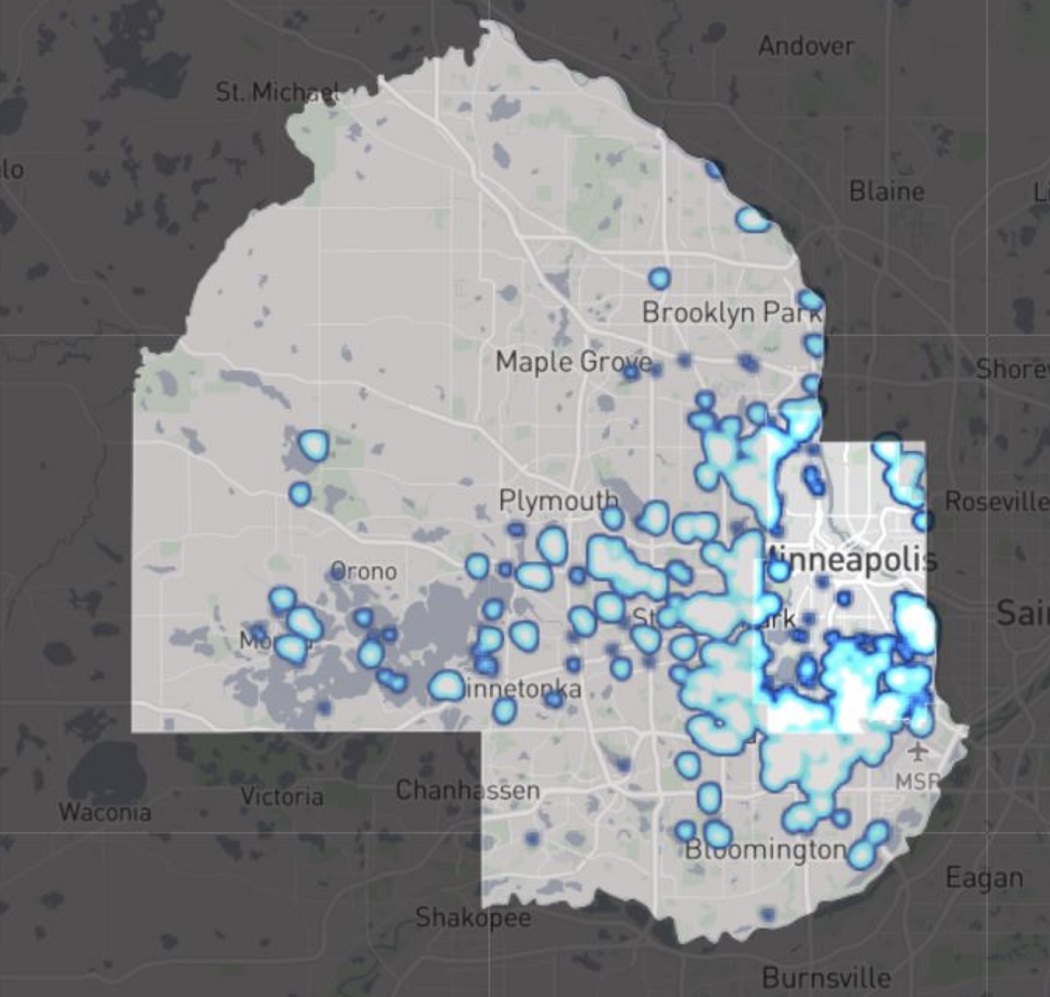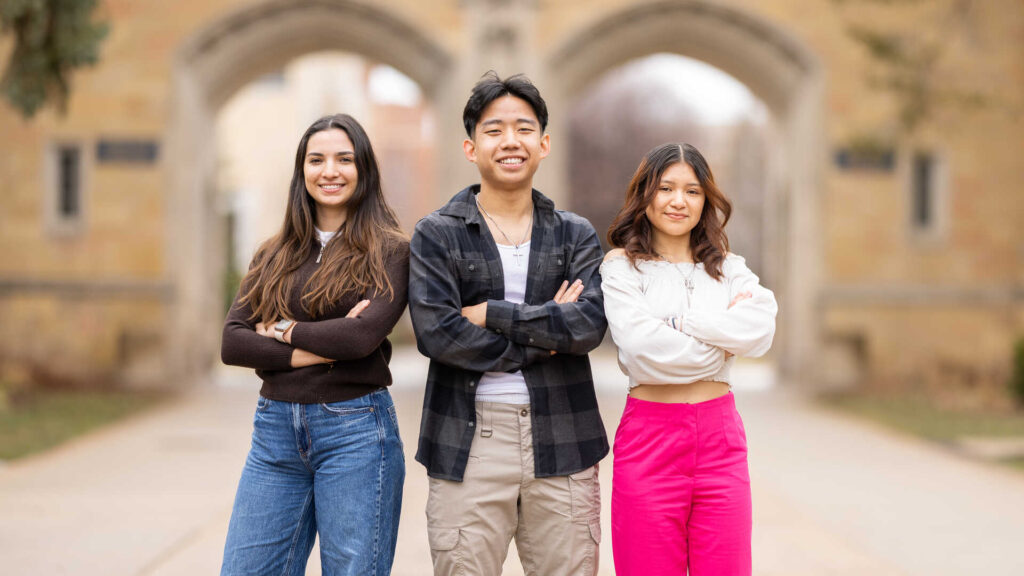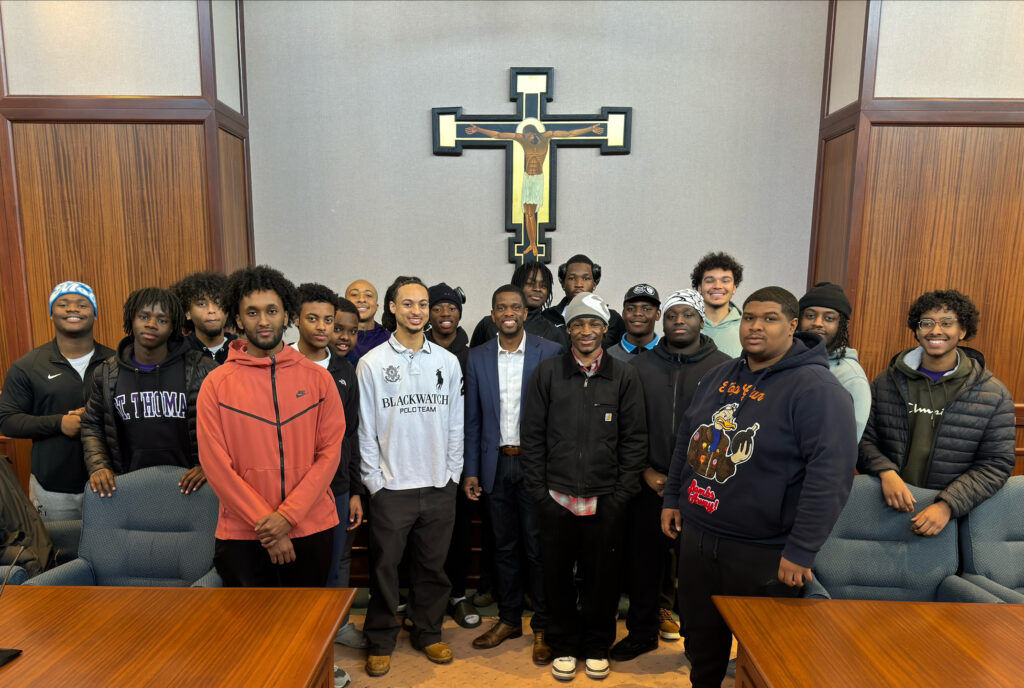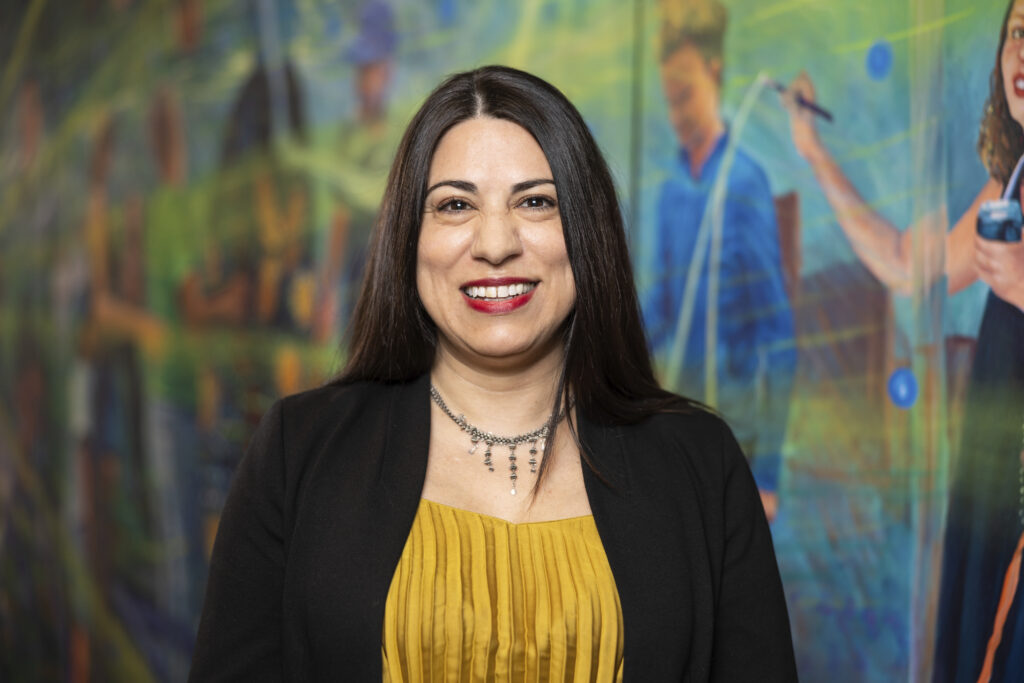Students in the Business 200 course this past year reviewed racial covenants issued only 50-100 years ago to find how deeply rooted racial disparities were in the Twin Cities, even when it came to who could and couldn’t own a home in certain neighborhoods. Using Business 200 as a platform to work with Mapping Prejudice, these students made findings that sparked surprise and revelations about race and privilege.
The Business 200 course at St. Thomas facilitates student engagement with local nonprofits and opens the door for students' awareness of continuing issues that the Twin Cities faces. The required course for all business majors includes 40 hours of volunteer work with a nonprofit of the student’s choice. The course must be finished within the semester, J-Term or summer.
Concluding the class with a time of reflection, each student presents on the impact they have made, knowledge they’ve gained and skills they have acquired through their Business 200 experience.
Diversity, equity and inclusion [DEI] continues to be a theme that is explored in Business 200 courses. A greater perspective of societal needs and divides is acquired through volunteerism, which has changed the lives of many St. Thomas students.
Volunteering for Mapping Prejudice
With the tagline, “Visualizing the hidden histories of race and privilege in the built environment,” University of Minnesota-based Mapping Prejudice has been an organization that continues to work toward ending systemic racism by raising awareness of the state’s historical discriminatory practices.
Volunteers often peer through multitudes of racial covenants that were used in Minneapolis and St. Paul to prevent people of color from residing in certain properties and areas.
Logan Petersmeyer ’20 volunteered for Mapping Prejudice in spring 2020. Over the course of his 40 hours, he said he flipped through thousands of covenants.
“You see [these] kinds of patterns. For example, you will see it bolded, ‘Only white people can live in these premises,’ or, ‘For as long as this set property exists it can never be rented or sold to a family of color.’ It was pretty obvious. It was crazy,” Petersmeyer said.
He continued, “It was eye-opening to see how these discriminatory covenants could be expressed. To see a relationship with all that today is, I mean it’s obvious. And it doesn't get talked about enough.”
Some students were able to help build the Ramsey County map, which shows how the effects of this racial discrimination continue to take place right outside of St. Thomas’ doors.
“The map I was helping build was Ramsey so it [was] crazy to see some of the deeds that say St. Paul, [which were] right down the street from the university,” Jordyn Odagwe ’21 said.
Hitting close to home, seeing the presence of racial injustice in the covenants is not only eye-opening, but gut-wrenching as the vocabulary used in these deeds is nothing short of disrespectful, said Odagwe.
“Some of the language is really hard to read sometimes because I am literally looking for racist text within these deeds that say stuff like no person of color, of Turkish descent, any[one] of Chinese descent is not allowed to live, own, rent this property unless they are servants. That was always the most difficult part. My entire goal was to look for these racial covenants that were a little bit sensitive,” she continued.
Shane Vazquez ’21 said that throughout his experience, he learned the importance of advocacy and supporting nonprofits such as Mapping Prejudice, which is struggling with a small staff and high needs.
“Especially in light of everything that's going on in the cities and politically in our country, they've just been swamped with reporters and everything, so I think getting them more help and really building up their programs is really important for increasing diversity around St. Thomas,” he said.
Pushing for change through relationships
Understanding the power of relationships when it comes to raising awareness of issues that threaten DEI was another common thread among students.
Emma Schiltz ’22 created a final project on the connection between the racial covenants she observed and where Brightside, a organization that delivers produce to food insecure neighborhoods. She crafted a map showing the correlation between BrightSide Produce’s prominence in BIPOC communities and where the racial covenants were found which mainly remain white communities today.
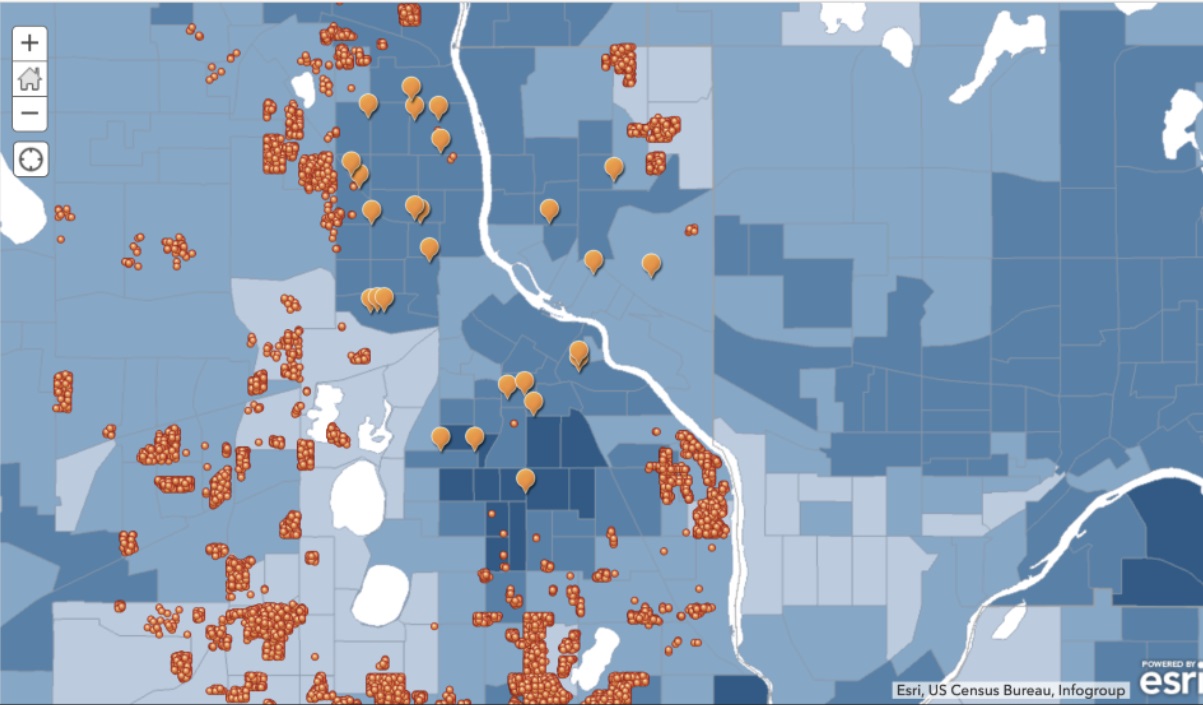
Schiltz’s findings are displayed on this map she created showing BrightSide Produce locations and the racial covenants she found while working for Mapping Prejudice. (Courtesy of Emma Schiltz ’22)
“I think the biggest takeaway was the final project and the combining of the two maps,” she remarked. “For me, I was able to share that with a lot of people whom I come into contact with pretty regularly. I was able to share that with my dad, my family, my grandparents. Redlining is not something that I feel like people usually know about or think about. If people know it exists, they probably don't really understand how it affects communities today. Having that visual aid and being able to show that to people has been a big takeaway for me. Personally, I've learned a lot and I've been able to share that knowledge with other people.”
Addie Betzler ’21 shared this thought: “I got to educate a lot of different friends and family about what I was doing and who I was helping, and about the project.”
Channeling their frustration with the racial injustice still taking place in our community, students in Business 200 have the opportunity to form their own beliefs about these pressing issues and generate ideas that target inequality.
“Other than awareness, pushing for change [is important],” Betzler continued. “You can't just sit back and expect someone else to create change and to speak out about this. Really taking a stance, getting involved, letting people know what is going on and reaching out to law and policymakers yourself. It might not seem like we are doing a whole lot, but there are still things we can do to create change.”
Since last spring, 50 Business 200 students have collaboratively donated about 2,000 hours to Mapping Prejudice and the number continues to grow.
In the Business 200 program, other areas of impact that students contribute toward include children and youth, food and hunger, education, housing, environment and sustainability, people with disabilities and more.
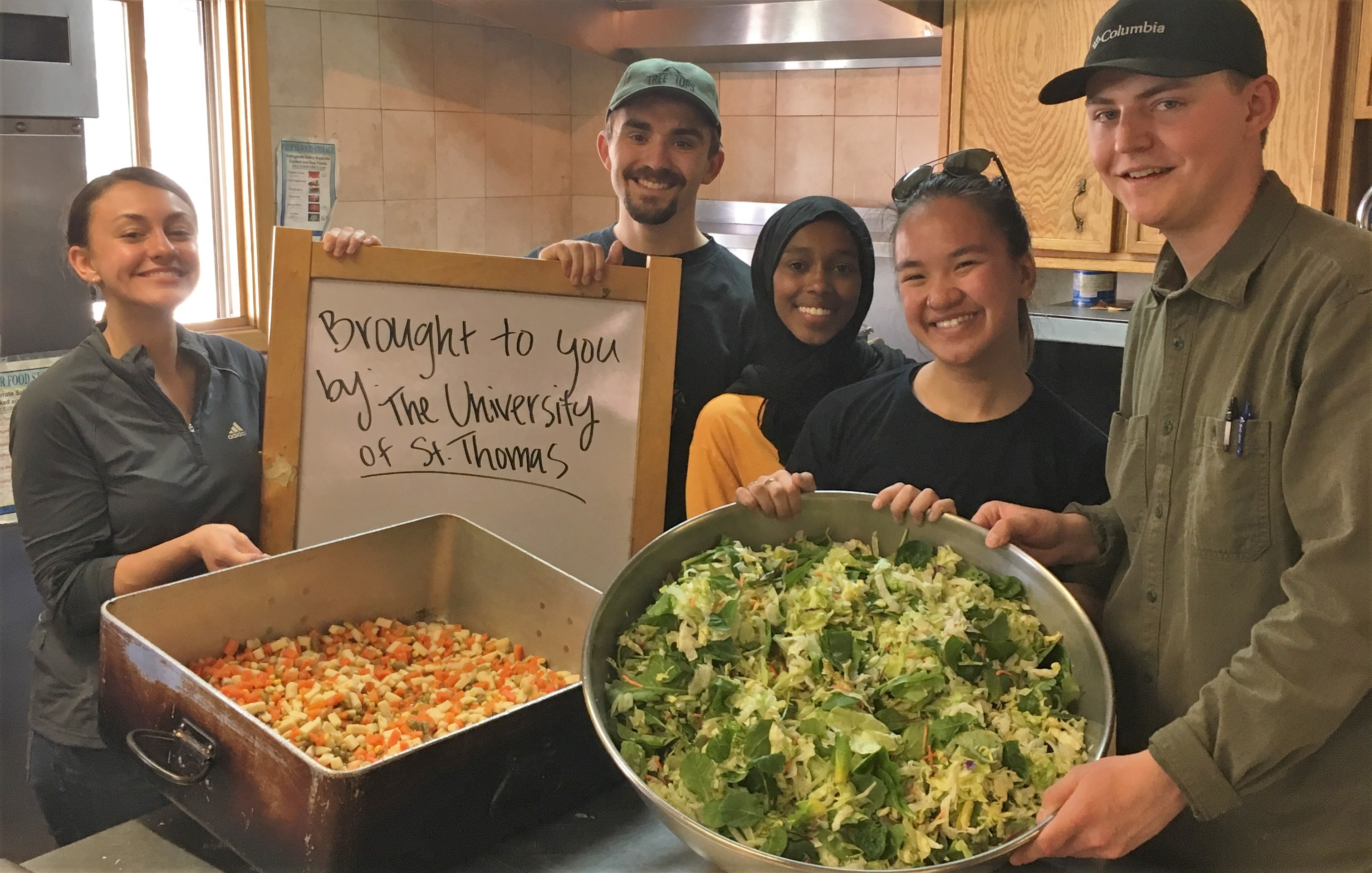
Business 200 students donate time and hard work to create meaningful change in the Twin Cities community. (Photo taken pre-pandemic.)
Business 200 Program Director Julie Reiter remarked, “I am so grateful to be witness to the amazing impacts of this program, both on our students and for our communities.”
As the program goes into its 30th year, Reiter acknowledged, “The Business Learning Through Service program has engaged thousands of students in meaningful volunteer work with nonprofits, living out the university's mission to serve the common good.”
Since 1991, it is predicted students have provided work valued at over $5.78 million.
With an amazing history of sparking change in the Twin Cities, Business 200 continues to bring awareness to pressing issues and allows students to work toward forming ideas that will reflect generosity and create impactful change in the Minneapolis-St. Paul community.
